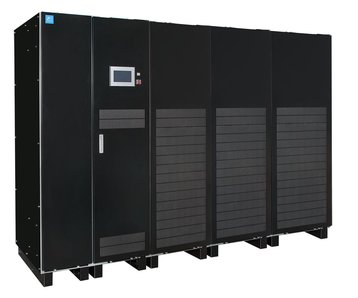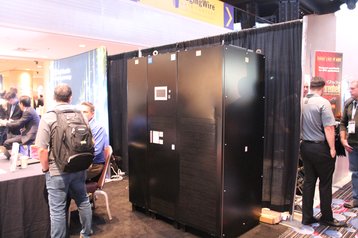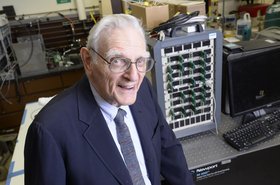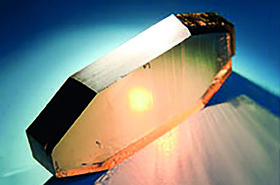Fuji Electric has announced a new high density modular UPS for the US market, which includes silicon carbide.
The 7400WX-T3U has a high efficiency, even on low loads, and has a high tolerance for overloads, which is important in a backup power system. The new material has been introduced in a careful and "elegant" way to improve performance without overly increasing cost, DCD was told, at the launch in DCD>New York.
Carborundum power
Silicon carbide (SiC) allows a UPS to be run continuously (in so-called double-conversion mode) without the losses associated with conventional systems. In practice, this means that UPSs can be used continuously, instead of switching to "eco-mode" which saves money for a small premium of increased risk.
Conventional UPSs have an efficiency of just around 96 percent when the load is fed directly from the UPS (double-conversion mode). Because of the small inefficiency of double-conversion, UPSs are often run in eco-mode where the load is fed directly from the grid, with the power quality monitored so the load can be switched quickly to the UPS when needed. This eliminates the losses, but slightly increases the risk, compared with running the load from the UPS all the time.
The efficiency of double-conversion increases to as much as 99 percent if SiC (known as carborundum when used as an abrasive), is used instead of conventional silicon in the manufacture of the transistors. That sounds a small increase, but it cuts the losses in double-conversion mode and removes the need to use eco-mode.
SiC components have come in slowly, as they are still expensive compared with conventional ones. Mitsubishi launched systems with SiC in 2015, but Fuji Electric argues that its just-launched products use SiC in a more elegant way. Mitsubishi uses SiC in MOSFETs (metal-oxide-semiconductor field-effect transistors), while Fuji uses hybrid IGBTs (insulated-gate bipolar transistors).
"Silicon carbide is a mature technology, and we could use it throughout, but that would increase the cost," Erik Monisera, US sales manager for Fuji Electric Corp. of America, told DCD. "Instead we use it in the rectifier only. It's an elegant compromise and effectively adds nothing to the cost."
MOSFET would have been cheaper, said Monisera, but this would effect the resilience of the unit, in particular the length of time it can operate under overload.
The 7400WX-T3U is available immediately in 330kVA modules which can be combined to create a unit supporting 1MW,plus a furth unit for N+1 redundancy. Eight of these can operate in parallel for systems up to 8,000kVA. The product data sheet claims its efficiency rating of 97.2 percent is "one of the highest in the industry".
UPS systems are normally operated at low loads, which inconveniently makes them less efficient, but Fuji Electric claims its new product still operates at 96 percent, even when only loaded at 25 percent of capacity.






